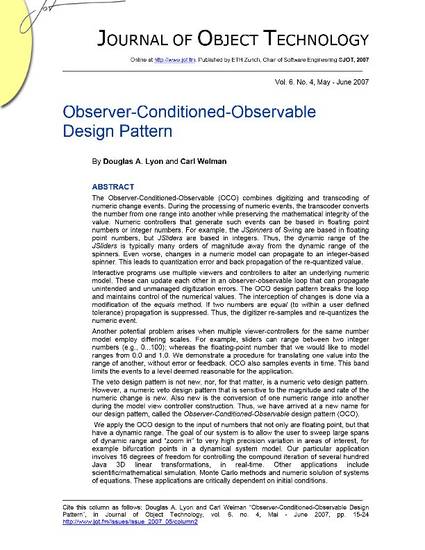
Article
Observer-Conditioned-Observable Design Pattern
Journal of Object Technology
Document Type
Article
Article Version
Publisher's PDF
Publication Date
5-1-2007
Disciplines
Abstract
Interactive programs use multiple viewers and controllers to alter an underlying numeric model. These can update each other in an observer-observable loop that can propagate unintended and unmanaged digitization errors. The OCO design pattern breaks the loop and maintains control of the numerical values. The interception of changes is done via a modification of the equals method. If two numbers are equal (to within a user defined tolerance) propagation is suppressed. Thus, the digitizer re-samples and re-quantizes the numeric event. Lazy instantiation is not new, nor, for that matter, is the singleton design pattern. However, parametric lazy instantiation is new and so is the parametric singleton.
Published Citation
Douglas Lyon, Carl Weiman, “Observer-Conditioned-Observable Design Pattern”, Journal of Object Technology, Volume 6, no. 4 (May 2007), pp. 15-24
DOI
10.5381/jot.2007.6.4.c2
None
Peer Reviewed
Citation Information
Douglas A. Lyon and Carl Weiman. "Observer-Conditioned-Observable Design Pattern" Journal of Object Technology Vol. 6 Iss. 4 (2007) Available at: http://works.bepress.com/douglas_lyon/22/

Copyright 2007 Journal of Object Technology
Archived with permission from the copyright holder.